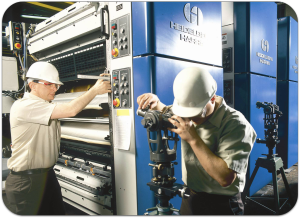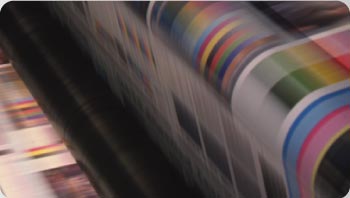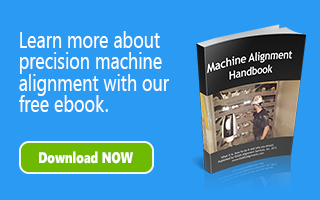Precision alignment is recommended by printing press manufacturers as the industry standard for ensuring press lines run at optimal speeds and produce high quality product.
Regardless of how precisely the printing press was aligned upon installation, its alignment condition will deteriorate over time due to several factors. These factors include normal day to day operation, routine roll, bearing or component changes and major component modifications.
But, how do you know when the press is out of alignment? The following is a list of signs that may indicate that one or more areas of the press is in need of equipment alignment adjustments.

Precision alignment of printing presses reduces issues such as wrinkles, web breaks and poor print registration.
Press is not running to contract speeds – A line shaft (or multi-drive) that is out of alignment will cause vibration throughout the press. This excessive vibration requires the press be operated at a slower than optimum speed.
Appearance of web wrinkles and/or web breaks – When web wrinkles and/or breaks begin to appear within in one or more of the presses within the press line, it is most often due to roll misalignment or misalignment between stations within the line.
Poor web tracking – If product begins to consistently run to either the work side or the gear side and the lateral registers cannot correct the tracking issue, there could potentially be roll misalignment within the press. Even if rolls are parallel, but not aligned perpendicular to the machine centerline, they create a parallelogram, which will force the sheet to one side or the other of the press.
Registration issues – When registration continues to be “off” and the lateral register is set to the maximum adjustment, there could be misalignment in one or more cylinders or rolls within the press.
Excessive side frame vibration – An increase in vibration is typically due to worn bearings, bushings and/or gears within the press. Worn bearings, bushings and/or gears are often a sign of equipment misalignment and if left in place, can cause additional (and costly) misalignment issues in other areas of the machine.
Increase in electric consumption or other utilities – Misalignment of press rolls causes bearing wear. Bearing wear causes friction and that friction causes a larger consumption of energy needed to run the press. If you are seeing energy spikes, there could be misalignment in one or more areas of your line.
NOTE: It should be noted that other factors, aside from misalignment, may also contribute to the issues listed above.Learn more about the causes of machine misalignment.

